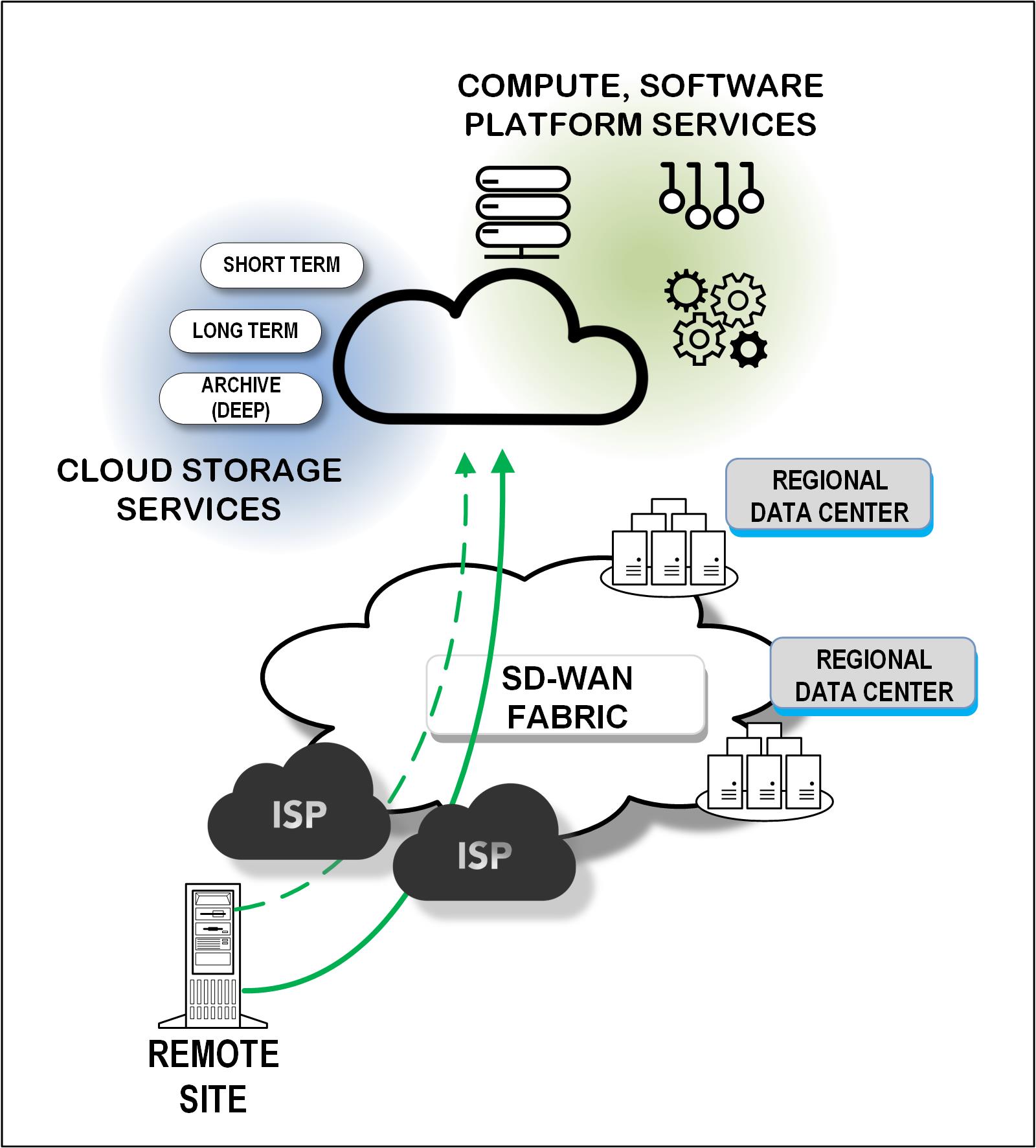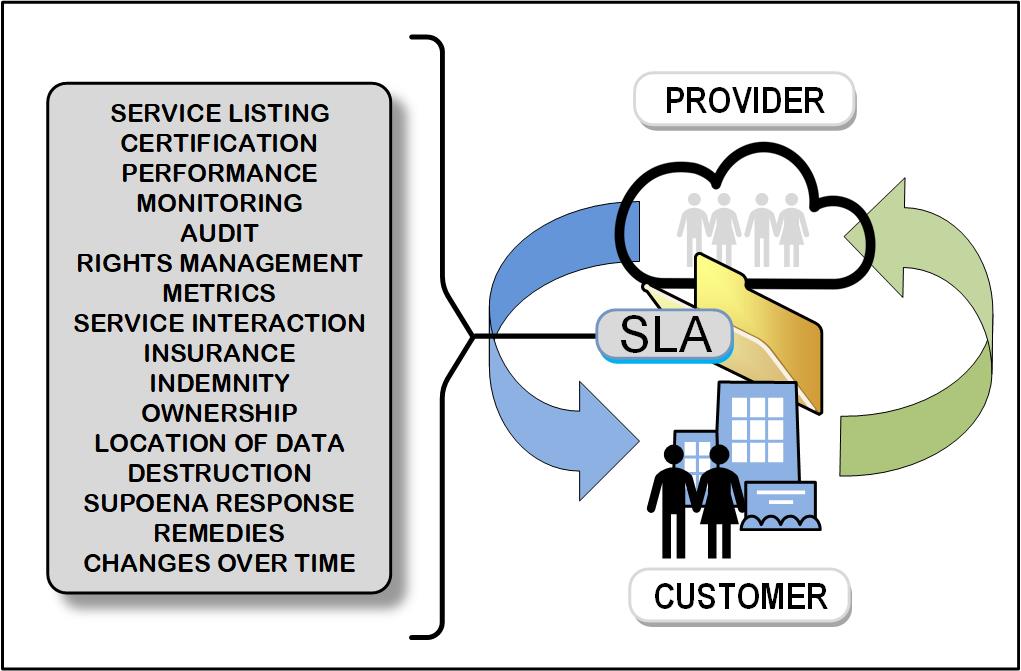Cloud Storage or Local SAN?
Knowing the impacts of both cloud storage or local SAN is an important study in capabilities and cost management

If you’re thinking about shifting storage to the cloud or if expanding the local storage area network (SAN) makes better sense, knowing the impacts of both options is an important study in capabilities and cost management. Even if you think you know what cloud storage might cost, perhaps because you’ve done it before, be sure you’re updated on all the recent facts, variables and combinations of services before making a move in either direction. Cloud services, like SAN storage, is an evolving and frequently changing environment.
ALWAYS A CHALLENGE
Expanding storage localized at the facility or in a cooperative datacenter has always been a challenge—add in the cloud options and you have much to understand. Selecting the type of storage has a direct reflection on its cost—either way. The storage performance desired is directly related to the volume of work activities and processing speed (the I/O) that you will need for the selected storage architecture and workflow.
For example, if you need to render a large set of animation clips, you will want fast access cache-like storage that can handle the throughput from the render engines without delay or latency. However, the life of that content, once rendered on that storage type, is relatively short compared to the volume size and length of retention for the entire set of finished, rendered files. Workflows will mandate migration of in-process render farm storage to secondary, longer-term storage to keep flows consistently moving from render engine to holding storage.
Costs for local storage are fairly predictable. For the cloud it becomes harder to cost and difficult to plan for. While cloud is fast to create, the total costs can go through the roof if not well-analyzed and controlled from the start.
CLOUD STORAGE COST BREAKDOWN
Cloud storage is a bit like going to the smorgasbord; many items are à la carte. Fees include monthly access, retention time, storage volume and/or the use of inherent capabilities of the store itself. Fig.1 depicts storage services and on-ramps to cloud services (via software-defined WAN) whose services may include storage access or may stand as separate items.

Use it once and quickly—a short term “put it there and take it back out”—and you’ll have one price. “Put it there and leave it there” for a lengthy period of time—another price. Need rapid access to something you placed into a long-term holding pen (an “archive”)? You can watch previously expected low-budget costs to take off like SpaceX launching multiple satellites one at a time.
Storage types and the services available are common cloud cost factors. Each services menu may have different parameters. Simple, elastic, deep (e.g., cold or “glacier”) vs. high-performance, regional or multiregional physical locations each have different cost factors. Choices become decisions that the user needs to make, each having a differential base on near- or long-term requirements, and, in turn, are reflected in each cost.
Costs vary based on where the storage is located; that is, where the physical data centers are geographically. Global replication and access to the storage, which gives lower latency and another degree of safety, is great if needed. If offices are scattered all over the planet with needs for shared file access, the added costs may not be as painful compared to the work lost in having to wait hours to days for file recovery.
Capacity, based on monthly consumption, definitely affects cloud storage budgets. Should your storage needs be layered (tiered), how much is placed into which bucket and how many copies of each bucket are needed for protection and/or accelerated access will impact costs accordingly. Local, hot or redundant storage will be priced at “so many pennies per gigabyte” for a set amount of storage (e.g., the first 100 TB) on a “per month” basis. Incremental increases won’t see much change, but 10x increases will see a suitable cost decrease measuring around a few points (100ths of cents) per 100 TB.
DATA DELETION—IT ISN’T FREE
Just because you paid to put storage in the cloud, and/or to keep it in the cloud for some period, doesn’t mean you can just “get rid of it” without incurring a fee. Surprise! Sometimes the cloud vendor’s “hook” is to let you use their buckets for a few cents per 100 TB per month. The shocker comes when you either want it back—now; or if you don’t need it any longer and you want to dump it. Expect a bill to dump the storage based on your agreement.
Data at rest fetches one price, but dead data for deletion brings another. If you’ve paid to put the data into deep, extended storage (usually at a much lower cost than rapidly available recoverable storage), the exit strategy will likely be different than if you paid a higher price for rapidly accessible storage, took the data out and never put anything back in its “formerly” empty space.
Contract terms are key to storage costs from time-zero to time-end. Variables are based on volume, accessibility, minimum retention policy and more.
POLICIES, PROVISIONING—AUDIT AND MOVEMENT
Thinly provisioned policies or confusingly complicated requirements should raise red flags. Before signing, verify the service level agreement (SLA); e.g., how it predefines maximum capacities for specific storage instances. There’s no standardization for cloud SLAs, but there can be large variances based upon multiple factors including short-term and long-term associations (Fig. 2).

Audit your cloud service billing to be certain the policies are followed and that your own needs don’t over or under exceed those requirements. Use available monitoring tools included in the service offering.
Be observant of cloud data movement and minimize it wherever practical. Public cloud storage should not be your primary backup, unless of course all your activities are 100% cloud-based. If using a hybrid cloud/local storage solution, take advantage of data minimization features. Deduplication can save costs by eliminating duplicate, redundant files before the data moves from on-prem to the cloud.
COMPLIANCE AND SECURITY ASSURANCE
Cloud computing widens attack surfaces in multiple dimensions. Know which side is responsible for security controls and assurances related to operations, carriage, storage and protection of the data entrusted to those services. Cloud providers usually take responsibility for physical security, business continuity, network security and disaster recovery (DR). Other security controls are likely the responsibility of the consumer.
What can or cannot be moved to the cloud is dictated by security and regulatory requirements guided by a raft of state, federal and international regulations. GDRP, the SOX Act, HIPPA (in medical) and other rights and acts can be complicated. If you’re not sure or willing to take the steps to figure them out, your better choice might be to keep your data stored locally. Don’t second-guess the value of your assets; be informed.
FACTORS GALORE
Add into the cloud vs. SAN (local) storage stew things like backup, recovery, automation, support, vendor prescriptions and lock-in, plus manageability and reliability, and you have a set of concoctions that just might make you think again about where, how and into “what” you place your most precious data.
You should also evaluate multicloud storage agendas. In this scenario, it’s critical to your business operations to determine precisely what data will be managed and where; how it will be stored; and how that data is transported from ground-to-cloud, cloud-to-cloud and back to ground again. Egress or access points may actually be bundled in the contract or the services might be discounted in order to offset third-party costs for access.
Don’t take strategies for storage, whether on the ground or in the cloud, lightly. Organizations expect consistency, uninterrupted performance and unprecedented reliability at a manageable cost. In an owner-provided on-prem SAN storage solution or an all-in-the-cloud alternative, be sure you know the expectations. Hire an expert outside entity to guide you through the marshlands ahead of making that final choice.
Karl Paulsen is CTO for Diversified. He can be reached at kpaulsen@diversifiedus.com.
Get the TV Tech Newsletter
The professional video industry's #1 source for news, trends and product and tech information. Sign up below.

Karl Paulsen recently retired as a CTO and has regularly contributed to TV Tech on topics related to media, networking, workflow, cloud and systemization for the media and entertainment industry. He is a SMPTE Fellow with more than 50 years of engineering and managerial experience in commercial TV and radio broadcasting. For over 25 years he has written on featured topics in TV Tech magazine—penning the magazine’s “Storage and Media Technologies” and “Cloudspotter’s Journal” columns.
